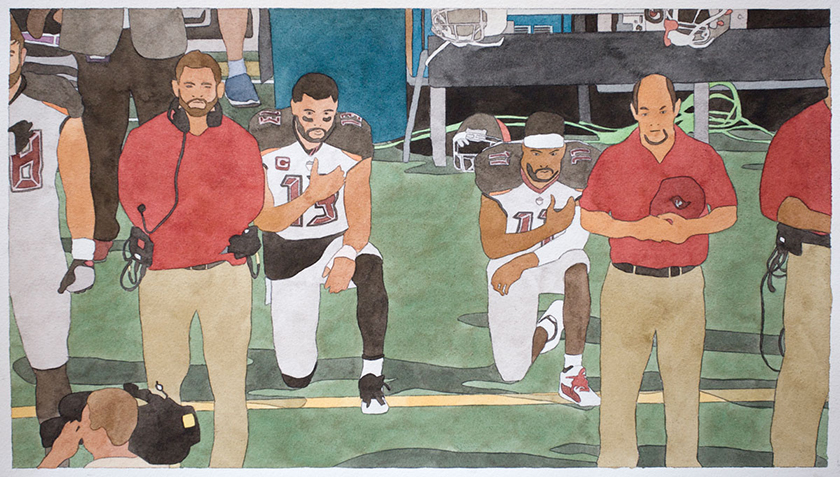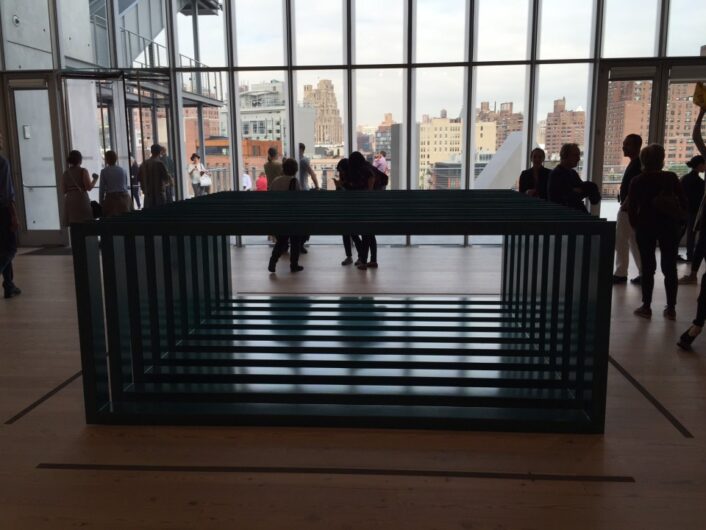Kota Ezawa (b. 1969, Germany, lives in Oakland, CA) shares his thoughts and process creating National Anthem. Video courtesy of the Whitney Museum of American Art.
Fine Art
Kota Ezawa’s “National Anthem”
Earlier this summer we viewed the 2019 Whitney Biennial. While there has been much controversy surrounding the biennial (see here and here), we were awestruck by National Anthem, a projected animation of over 200 individual watercolors by Kota Ezawa, which plays at the entrance to the galleries over The Star Spangled Banner by a cello quartet.
We find the thoughtful and articulate methods of the projected animation incredibly moving. A lifelong soccer fan Ezawa was always fascinated by the visible tension of the athletes and coaches during the national anthems which is supposed to be a serene and reflective time.
Born in Germany and of Japanese heritage, Ezawa explains that growing up he was never sure “which flag to wave.” Living in Oakland, California, he is no stranger to demonstrations.
His fascination with athletes’ nonverbal protest during the national anthem is rooted in the notion that you wouldn’t protest something if you didn’t love the country you represent so deeply. His interest already piqued, these nonverbal gestures of NFL players served as his muse for National Anthem.

Kota Ezawa, sketch for National Anthem, 2018. Image courtesy of the Whitney Museum of American Art.
Ezawa used live camera footage to create sketches of various football teams first before painting with watercolors. He depicted various football teams, focusing sometimes on the players, cheerleaders, or football gear. According to his interview with KQED, each image was rendered three separate times.

Kota Ezawa, watercolor for National Anthem, 2018. Image courtesy of the Whitney Museum for American Art.
Once the sketches and watercolors were completed, Ezawa then “stitched” the individual watercolors together to create a two minute animation entitled National Anthem, 2018, which greets you as you enter the biennial.
While the Whitney Biennial and the protests during the national anthem are divisive, we hope you will keep an open mind and consider the meticulous artistic process behind Ezawa’s National Anthem.

Kota Ezawa, National Anthem (Tampa Bay Buccaneers), 2019. Watercolor on paper. 10 1/2″ H X 19″ W. Edition variée of 3. Image courtesy of the artist and Haines Gallery. Details courtesy of KQED.
